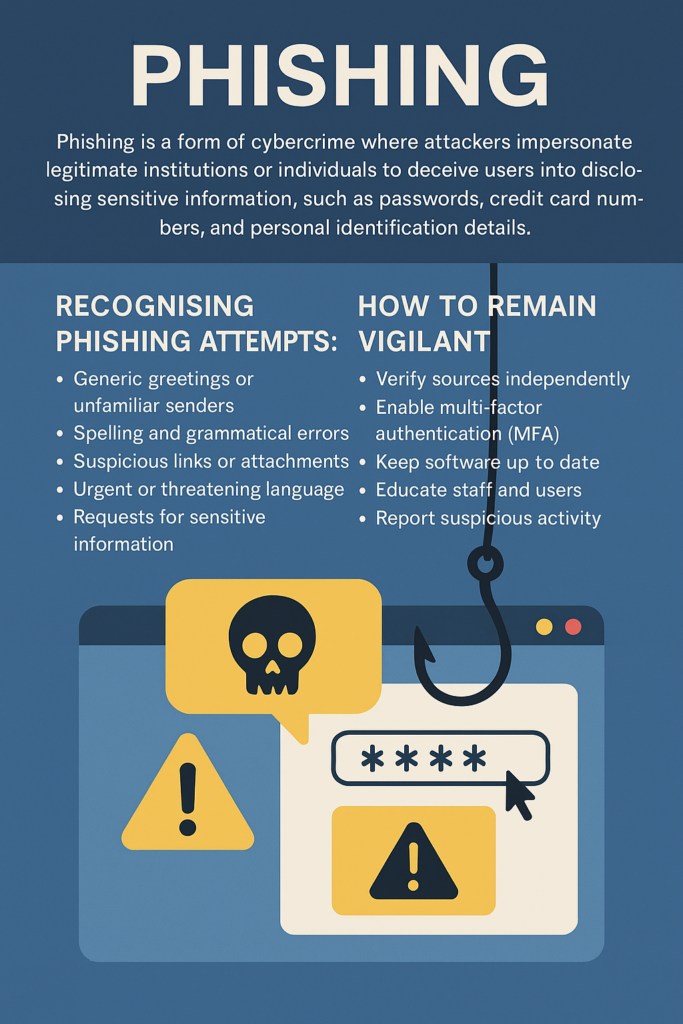
Phishing is a form of cybercrime where attackers impersonate legitimate institutions or individuals to deceive users into disclosing sensitive information, such as passwords, credit card numbers, and personal identification details. These fraudulent attempts are often made via email, text messages, phone calls, or malicious websites that mimic trusted entities.
Phishing attacks have evolved in both frequency and sophistication, targeting individuals, businesses, and public institutions alike. Common tactics include creating a sense of urgency, impersonating known contacts, or embedding links that redirect users to counterfeit login pages. Once a victim submits their credentials or downloads a malicious attachment, the attacker may gain unauthorised access to financial accounts, corporate systems, or confidential data.
Recognising Phishing Attempts:
Generic greetings or unfamiliar senders – Phishing emails often avoid personalisation.
Spelling and grammatical errors – Poor language use is a common red flag.
Suspicious links or attachments – Hovering over links may reveal mismatched or unusual URLs.
Urgent or threatening language – Messages pressuring immediate action should be treated cautiously.
Requests for sensitive information – Legitimate organisations rarely request passwords or payment details via email.
How to Remain Vigilant:
Verify sources independently – Contact organisations directly through known channels if in doubt.
Enable multi-factor authentication (MFA) – MFA significantly reduces the risk of unauthorised access.
Keep software up to date – Regular updates patch known vulnerabilities exploited by attackers.
Educate staff and users – Awareness training is essential in reducing human error.
Report suspicious activity – Notify your IT department or relevant authority if you suspect a phishing attempt.
Cybersecurity is a shared responsibility. By adopting best practices and maintaining a sceptical eye, individuals and organisations can effectively mitigate the risks associated with phishing attacks.
We use cookies to give you the best online experience. By agreeing you accept the use of cookies in accordance with our cookie policy.